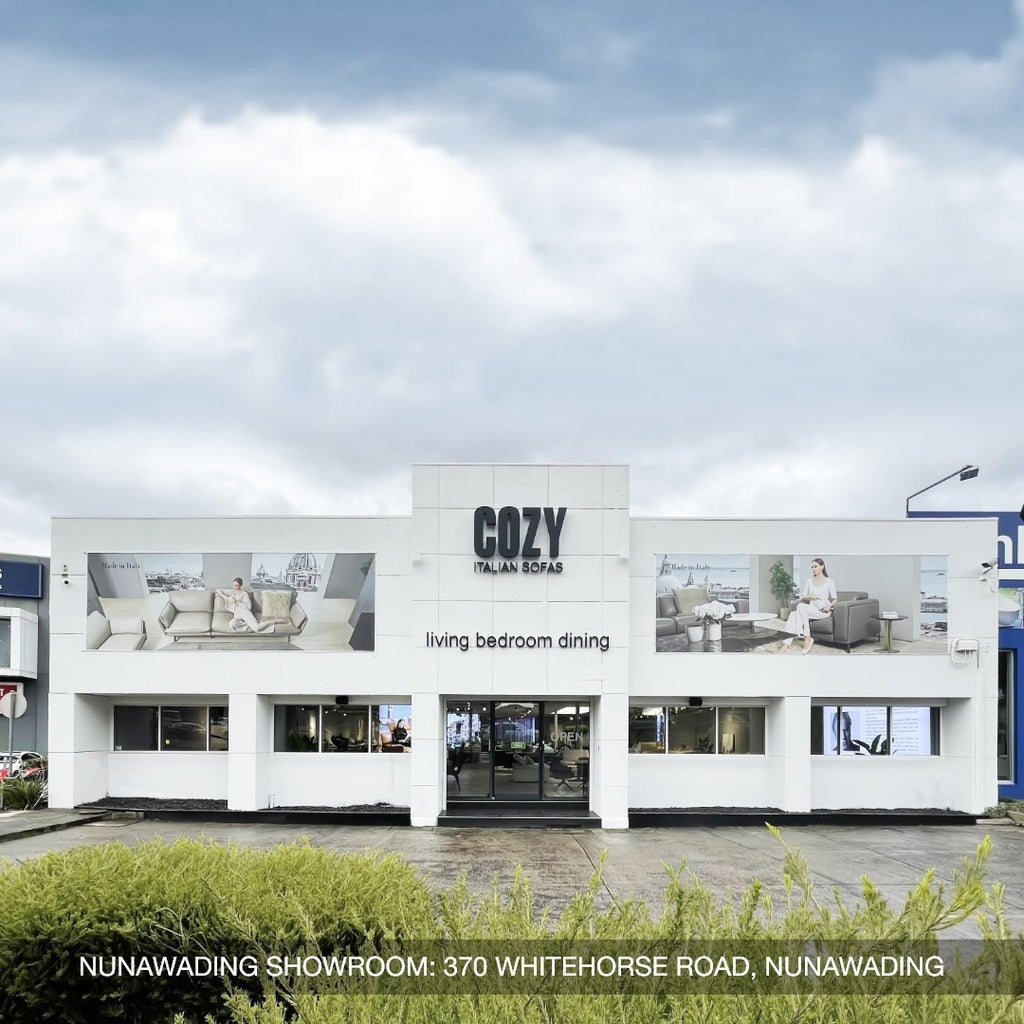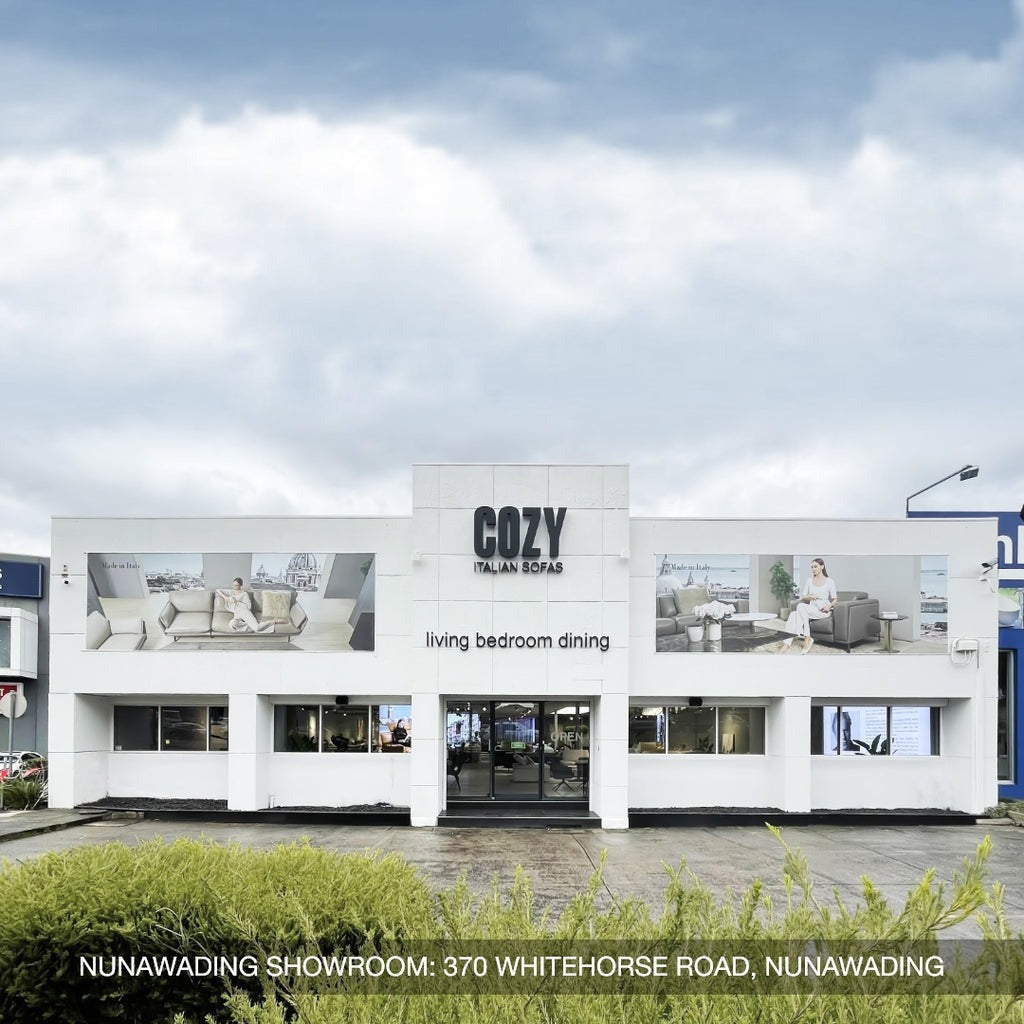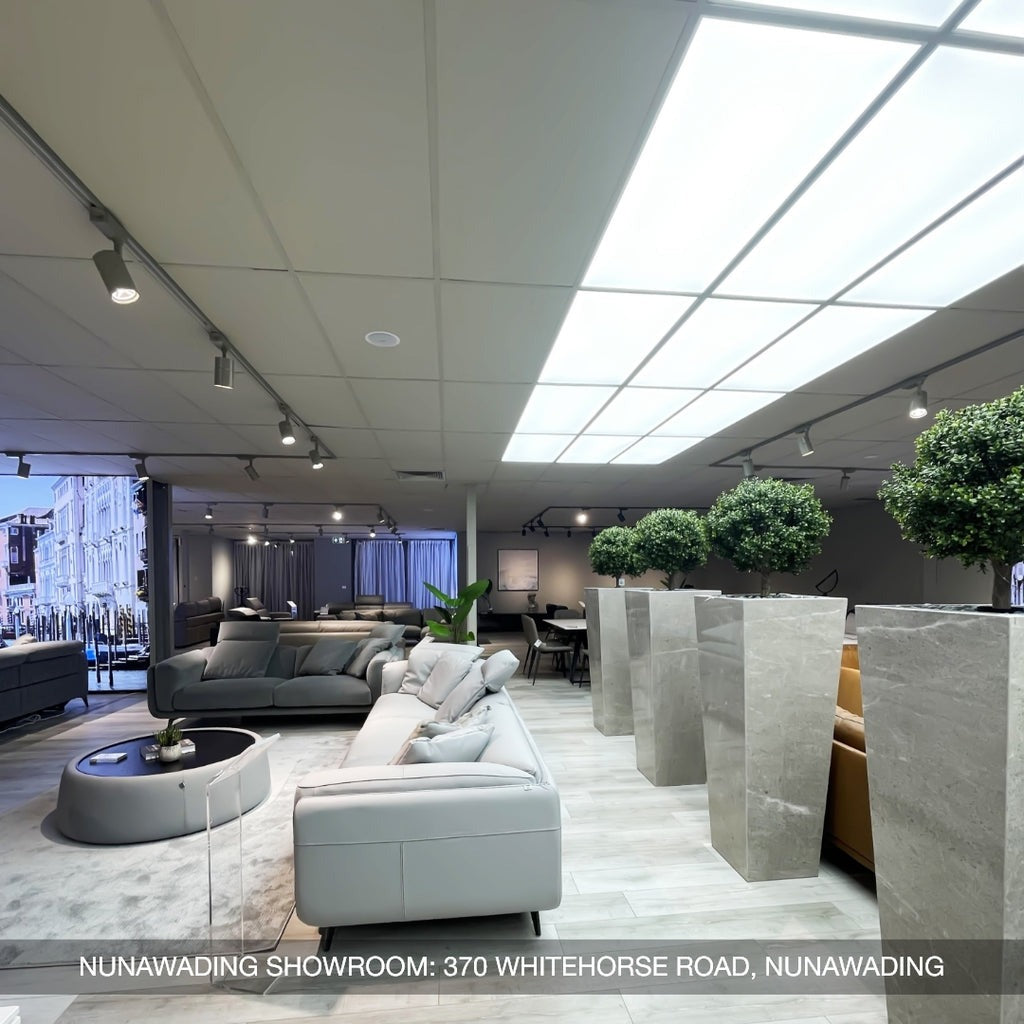Traditional sofas have long dominated homes with their timeless appeal and versatile design, seamlessly fitting into formal and casual settings alike. However, the emergence of innovative seating options has introduced exciting alternatives worth considering. A modern reclining couch represents the latest evolution in furniture design, prioritizing enhanced comfort through adjustable features that adapt to your relaxation needs. Whether you're drawn to a classic reclining couch with chaise for ultimate lounging or prefer the streamlined functionality of a reclining couch sofa, understanding the differences between these options becomes essential. This comprehensive comparison will examine crucial factors including comfort levels, aesthetic appeal, spatial requirements, pricing considerations, and overall functionality to help you make an informed decision that perfectly matches your lifestyle and home environment.
Reclining Couch Sofa or Traditional Sofa: How They Differ
While both options provide seating, their design approaches and user experiences differ significantly. Traditional sofas offer time-tested reliability with fixed structures, whereas a reclining couch sofa incorporates adjustable mechanisms for enhanced comfort. Therefore, examining these key differences will help you choose the option that best matches your lifestyle and home requirements.
Comfort & Ergonomics
Reclining sofas provide customized lounging positions, exceptional support for lower back and legs, and actively promote relaxation throughout the day. Users experience less back pressure when using reclining positions compared to traditional seating. Additionally, a recliner three seater allows multiple family members to find their ideal comfort level simultaneously, with independent adjustment controls for each seat. Beyond basic reclining, reclining chaise lounge chairs extend this comfort concept by providing full-body support that follows the spine's natural curve. These designs help reduce hip flexor tension and neck strain that often develops from extended sitting periods.
In contrast, traditional sofas focus on structured seating that maintains upright posture, making them ideal for conversations, formal gatherings, or hosting guests. The firm cushioning encourages proper spinal alignment during social activities. Interior designers recommend traditional sofas for formal settings because they promote alert, engaged posture and facilitate easy conversation flow.
Functionality & Features
Recliners offer impressive adjustable positions, with premium models featuring up to 16 different angles for various activities. Furthermore, many of the new reclining models include massage functions, heating elements, cup holders, and USB charging ports. These technological additions transform your seating into a complete relaxation station that addresses multiple daily needs. Power mechanisms have become increasingly sophisticated, with memory foam that adapts to individual body shapes and wireless controls for effortless adjustments. Some models now integrate with smart home systems, allowing voice activation and smartphone control.
Conversely, traditional sofas are simpler, easier to maintain, and focus on timeless usability without complex mechanisms. Consumer reports show traditional sofas last more than 15 years with proper care, compared to more than 10 years for reclining models. The straightforward design means fewer repairs, lower maintenance costs, and no concerns about electrical compatibility.
Aesthetic & Style Options
Reclining couches tend to have a bulkier, more casual appearance due to their internal mechanisms and reinforced frames. The additional hardware creates a substantial visual presence that works well in family rooms and entertainment spaces. However, modern designs have reduced bulk while maintaining full functionality.
Meanwhile, traditional sofas come in diverse styles, from modern minimalist to antique elegance, and often fit more seamlessly into various interior design themes. Their clean lines adapt easily to changing decor trends, and their streamlined profiles work particularly well in formal settings and smaller spaces where visual lightness matters.

Reclining couches typically present a more substantial, relaxed appearance due to their internal mechanisms and reinforced construction.
Space & Layout Requirements
Reclining sofas require clearance behind or in front to fully extend, typically needing 24-36 inches of additional space depending on the model. This can be challenging in small rooms where every square foot counts. However, wall-hugging designs now require only 6-8 inches of clearance while providing full reclining capability.
Traditional sofas fit snugly against walls and are easier to arrange in compact spaces. Their fixed dimensions allow precise space planning and greater flexibility in room arrangements. Interior designers often recommend traditional sofas for spaces under 200 square feet, where maximizing floor space maintains an open, uncluttered feeling.
Maintenance & Durability
Reclining mechanisms can wear out over time and require technical repairs, especially the motor components in power models. The reclining sofas need professional service, typically for motor replacements or mechanical adjustments. An electric recliner couch presents additional complexity since electrical systems require specialized repair technicians when problems arise. Regular maintenance becomes crucial for extending lifespan. Quality models like a leather recliner sofa can last 10-12 years with proper care, though mechanical parts may need attention before upholstery shows wear. Lubricating moving parts every 6 months and operating controls gently helps prevent premature breakdowns.
In contrast, traditional sofas have fewer mechanical issues and are typically longer-lasting if built well. Without moving parts or electrical components, they avoid common failure points that plague reclining models. Well-constructed traditional sofas often survive 15-20 years, with frame quality and cushion materials determining longevity. Maintenance involves simple cleaning routines and occasional cushion rotation or replacement.
Price & Value
Recliners are generally more expensive due to moving parts, power features, and complex manufacturing requirements. Entry-level reclining models start around $800-1,200, while premium versions with massage and heating reach $3,000-5,000 per piece. Manufacturing costs reflect the engineering needed for smooth operation and integrated technology features. Additionally, ongoing expenses include potential repairs and electricity usage for power models. Professional service calls typically cost $150-300, depending on repair complexity. Extended warranties often add $200-400 to initial purchase prices but provide peace of mind for mechanical components.
Traditional sofas come in a broader price range and often cost less upfront, with quality options spanning $500-2,500 or more. This wider spectrum accommodates various budgets more easily. Lower maintenance requirements mean fewer surprise expenses, making total ownership costs more predictable over the furniture's lifetime.
Usage Scenarios
Recliners are great for family TV rooms, media spaces, or homes focused on lounging and extended relaxation periods. They excel in entertainment areas where people spend hours watching movies, playing games, or streaming content. A reclining couch sofa works particularly well in basements, family rooms, or dedicated theater spaces where comfort outweighs formal appearance. These pieces also function excellently as a reading chair in master bedrooms or home libraries, providing adjustable support for lengthy reading sessions. The ability to elevate legs and modify back angles reduces fatigue during extended use, making them ideal for book lovers or students.
Meanwhile, traditional sofas are better for formal living rooms, open-plan homes, or minimalist aesthetics where clean lines take priority. They work well in multi-purpose spaces that serve as both living areas and workspaces. Their structured design facilitates conversation and social interaction, making them perfect for entertaining guests or family gatherings.
Lifestyle Needs
If you prioritize comfort and tech-enhanced lounging experiences, choosing a reclining sofa aligns with relaxation-focused lifestyles. These pieces suit households where family members frequently watch television, read extensively, or deal with back problems that benefit from adjustable positioning. People who work from home and need comfortable seating for breaks also appreciate reclining options.
Alternatively, if you value design flexibility, simplicity, and layout versatility, a traditional sofa might suit your preferences better. These options work well for people who rearrange furniture seasonally, live in compact spaces, or prefer timeless aesthetics that won't become outdated.

When you emphasize design flexibility, simplicity, and arrangement versatility, a traditional sofa may better match your preferences.
Which One Is Right for You?
After examining all these factors, making the final decision becomes much clearer when you focus on your specific needs and circumstances. Both furniture types offer distinct advantages that appeal to different lifestyles and preferences.
- Recliners offer maximum comfort and modern convenience, especially models like swivel recliner chairs that provide 360-degree rotation for optimal viewing angles. An electric sofa delivers effortless positioning with the touch of a button, perfect for people with mobility issues or those who simply enjoy high-tech convenience. However, these benefits come with trade-offs, as reclining furniture can be bulky and more expensive than traditional alternatives. The initial investment typically runs 40-60% higher than comparable traditional pieces.
- On the other hand, traditional sofas are versatile, design-flexible, and easier to fit in various interiors without compromising room flow or aesthetic balance. They work seamlessly in formal settings, small spaces, and homes where furniture gets rearranged frequently. However, they may lack the deep lounging capability that many people crave after long workdays or during weekend relaxation.
- The best choice depends on finding the right balance between comfort and design that fits your lifestyle perfectly. Consider how you actually use your living space daily rather than how you think you should use it. If you spend most evenings watching television or reading, comfort features become more valuable than formal appearance.
- Don't just follow trends or choose based on what looks good in showrooms. Instead, evaluate your space constraints, daily habits, and long-term expectations honestly. Think about whether you'll use reclining features regularly or if they'll become novelties that add unnecessary complexity to your furniture.
- When in doubt, test both types in-store or read user reviews to feel the difference firsthand. Spend at least 15-20 minutes sitting in each style, trying different positions and imagining how they'd work in your daily routine. Pay attention to how easy it is to get in and out, how the back support feels, and whether the size fits your body comfortably.

After evaluating all these considerations, reaching the final decision becomes significantly clearer when you concentrate on your particular requirements and living situation.
FAQs
1. Do Reclining Sofas Last As Long As Traditional Sofas?
It depends on the build quality and how often the reclining mechanism is used throughout its lifespan. Traditional sofas tend to last longer because they have fewer moving parts that can break down over time. However, a high-quality reclining couch sofa with proper maintenance can also be very durable. Regular lubrication and gentle operation significantly extend reclining furniture lifespan.
2. Are Reclining Sofas Safe For Kids And Pets?
Most are generally safe, but safety depends largely on the mechanism type and supervision levels. Manual recliners can pinch fingers or paws if operated carelessly, so an electric sofa with smooth, slow operation is typically safer for households with children. Always supervise young children around motorized furniture and teach proper usage. Models like a reclining couch with chaise often include safety locks to prevent accidental activation, making them more family-friendly options for busy households.
3. Do Traditional Sofas Have Any Ergonomic Support?
Some traditional sofas now incorporate ergonomic cushions, lumbar support, and high-density memory foam to improve comfort significantly. Modern designs feature contoured backs and strategic cushion placement for better spinal alignment. However, they still lack the adjustability that reclining sofas offer for personalized positioning. Fixed-position ergonomic features help, but they cannot match the customizable support that adjustable mechanisms provide for different body types and activities.
Consider how reclining chaise lounge chairs might transform your leisure time or how a versatile reclining couch sofa could enhance your family's comfort. The right choice balances your comfort needs, space constraints, and design preferences perfectly. For premium quality furniture that combines durability with style, explore COZY's extensive collection of both reclining and traditional sofas designed to elevate your home experience.





